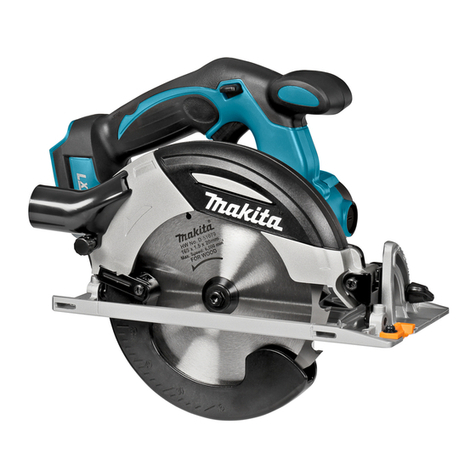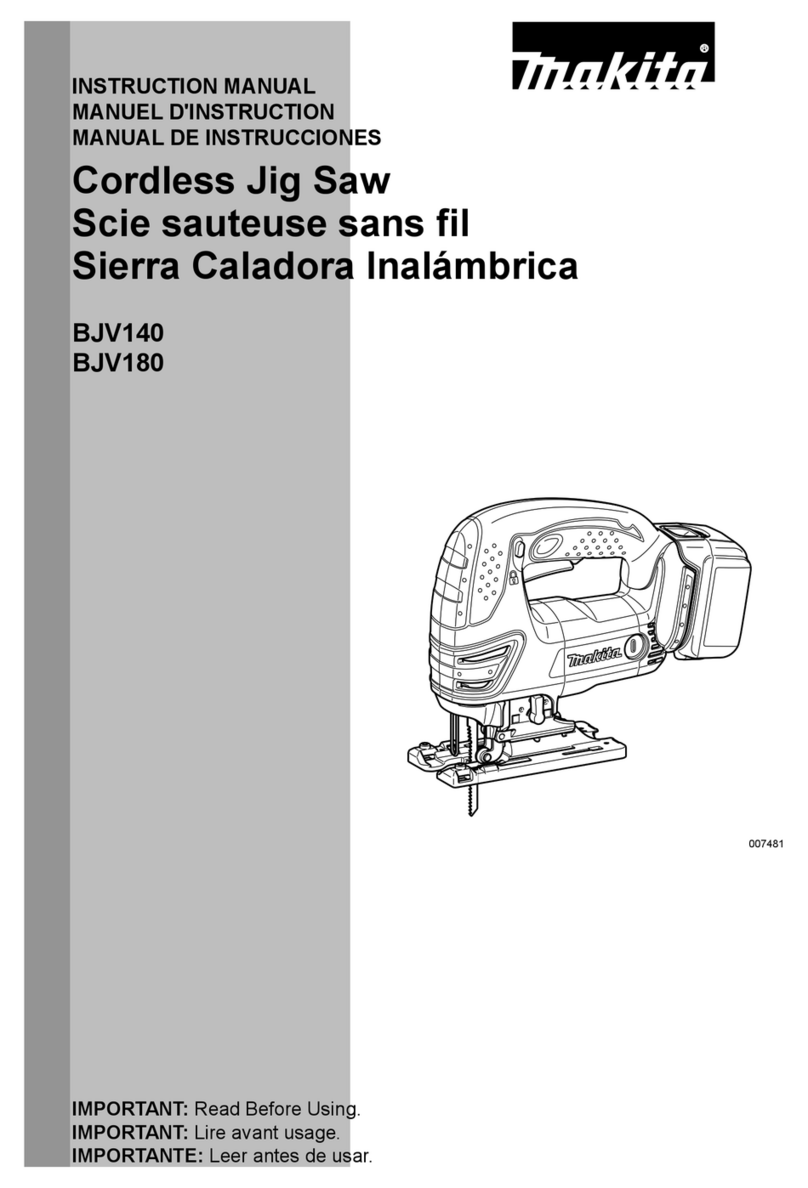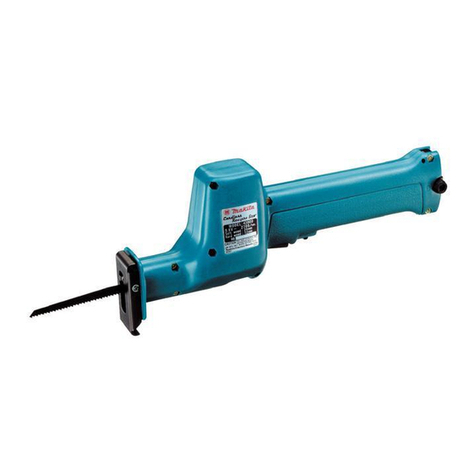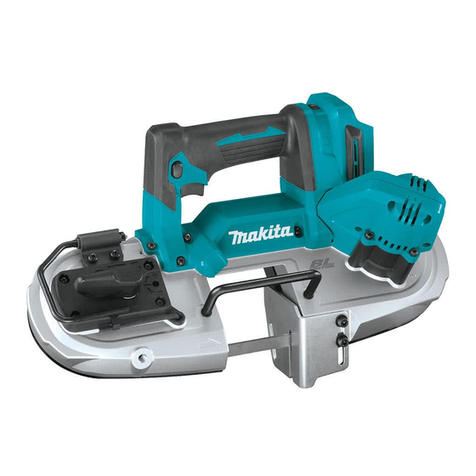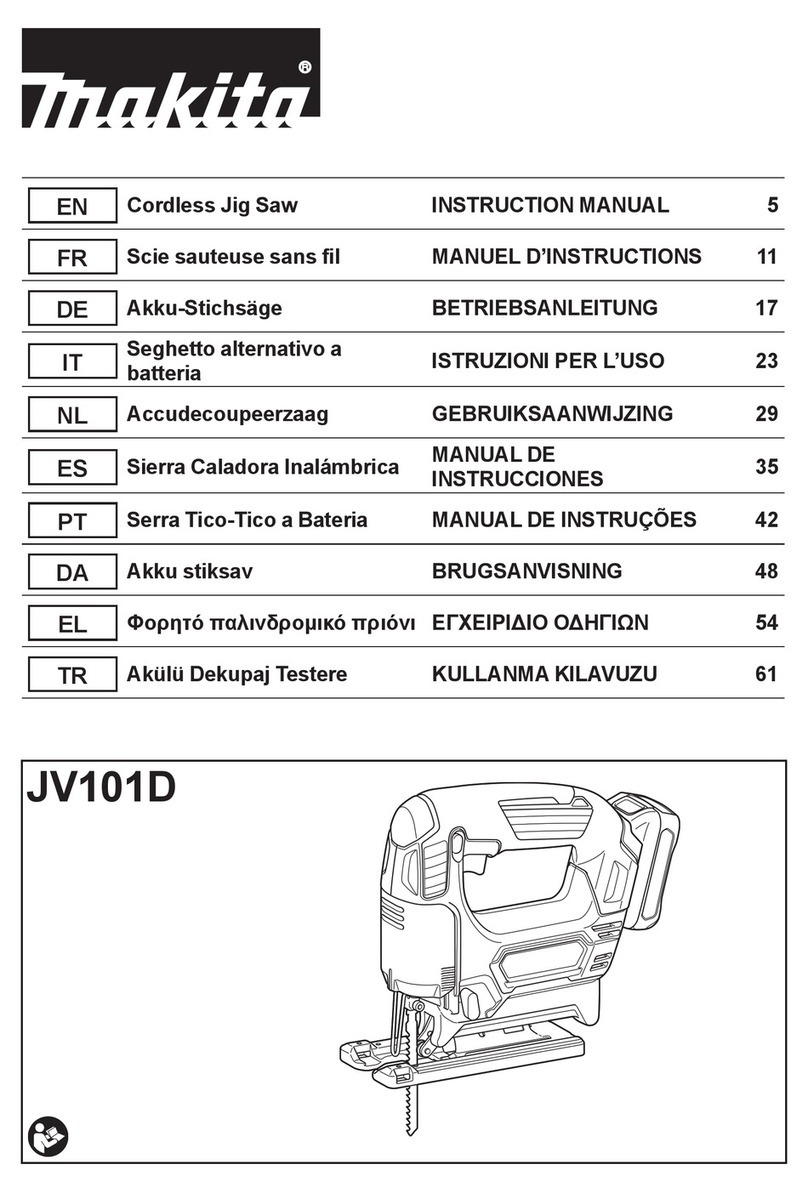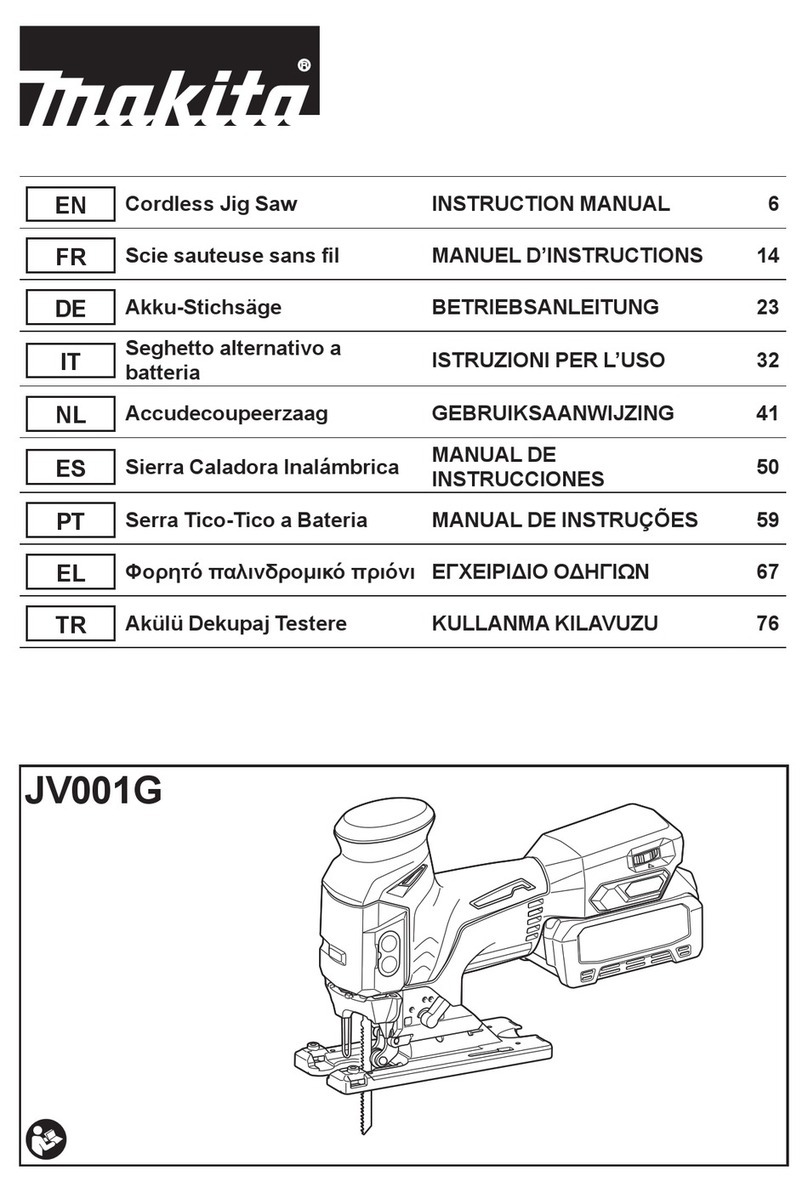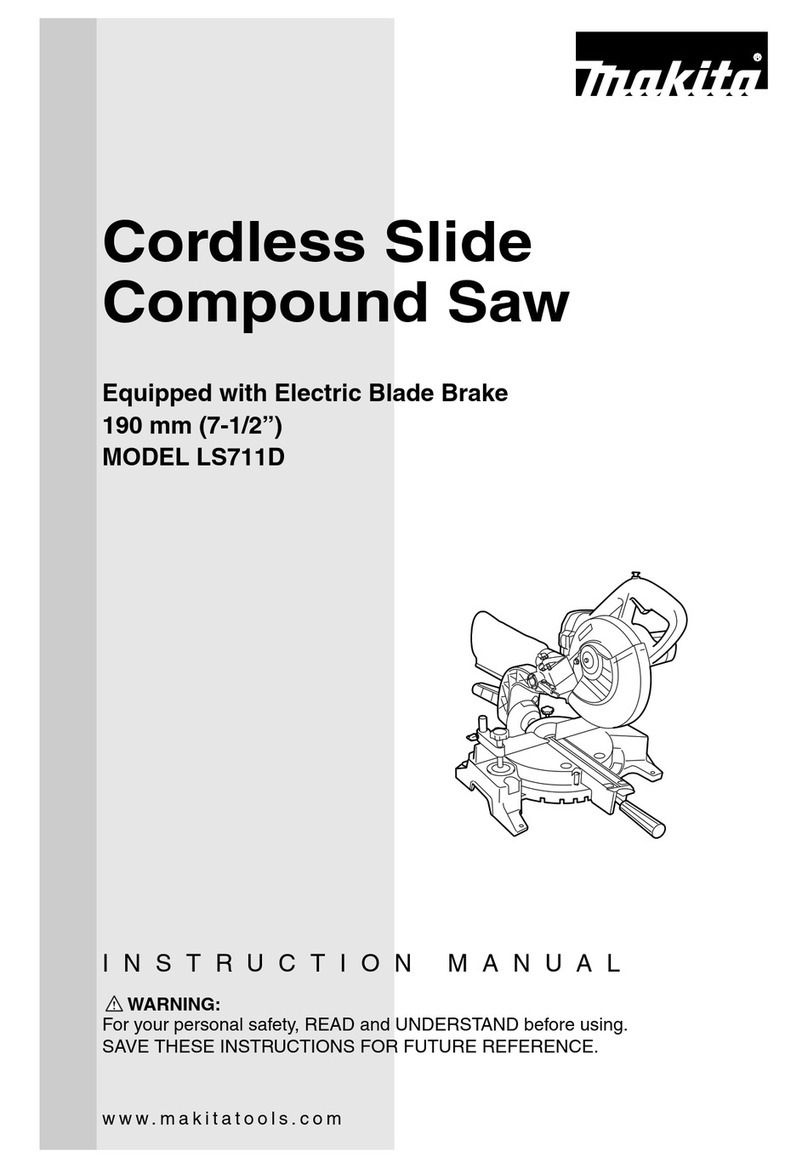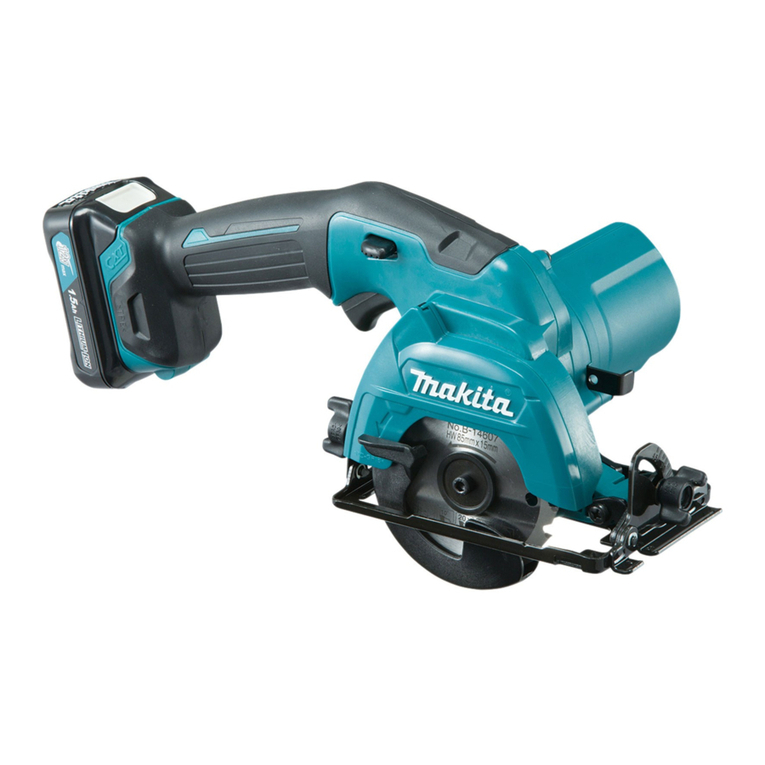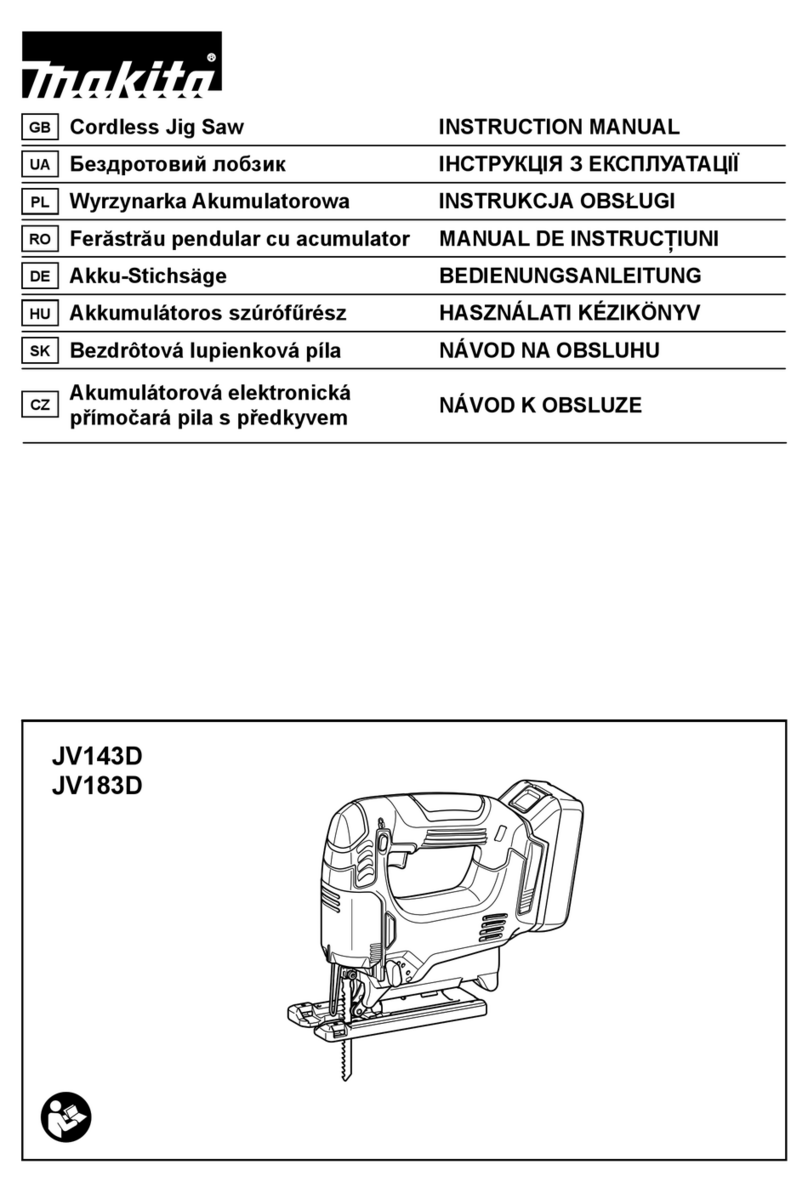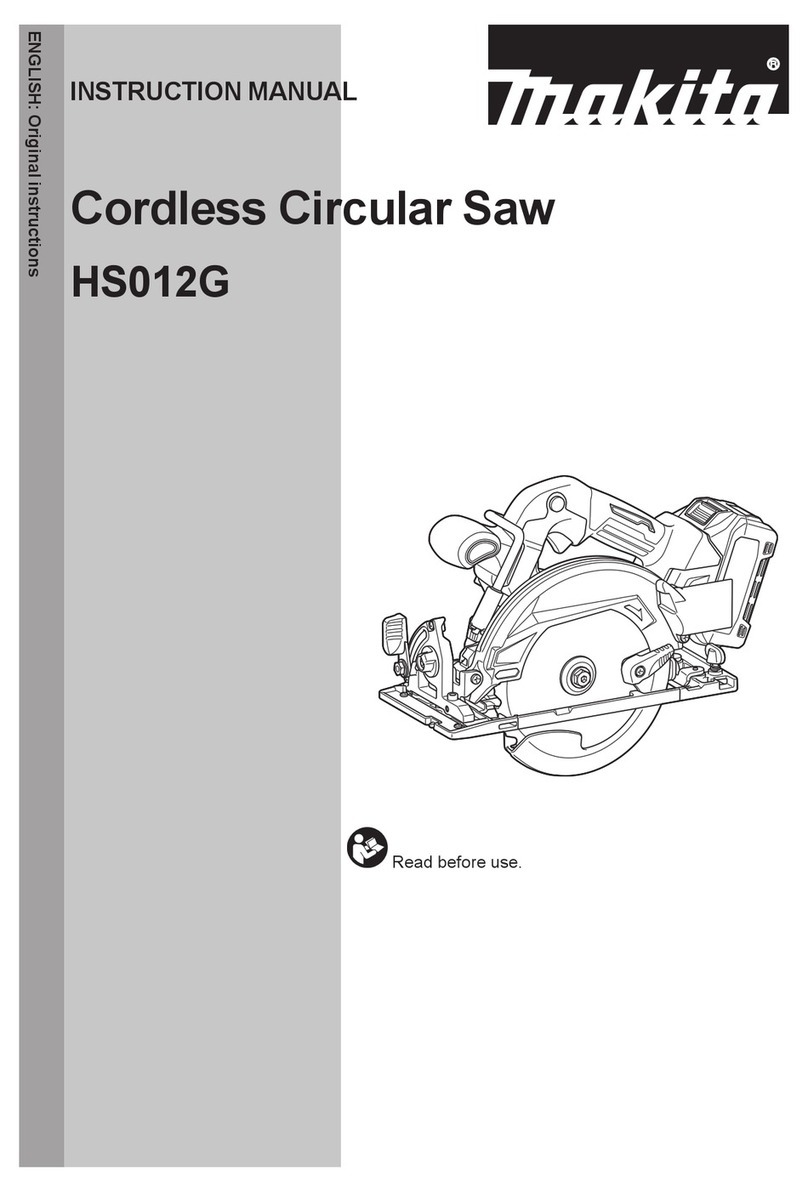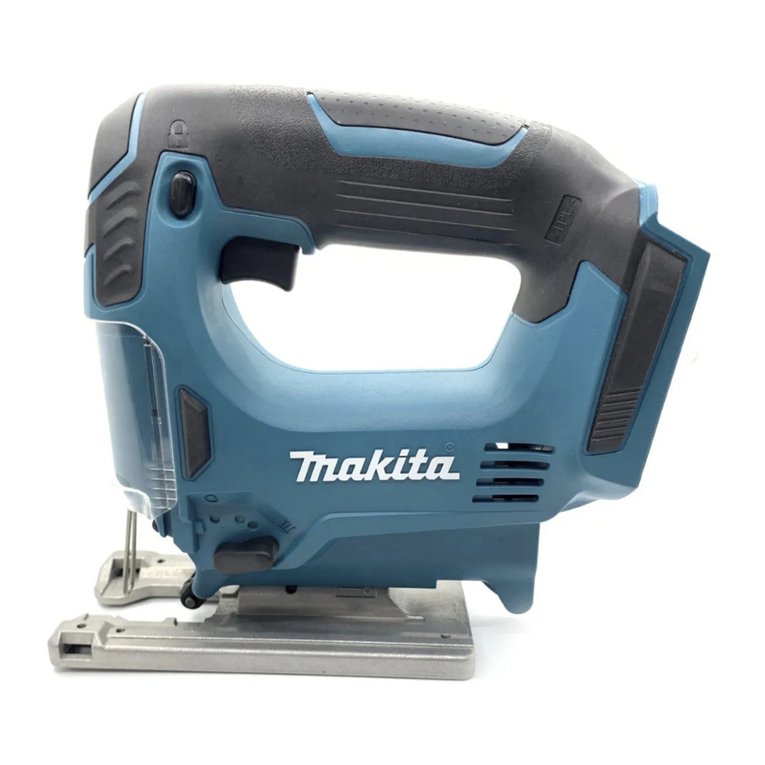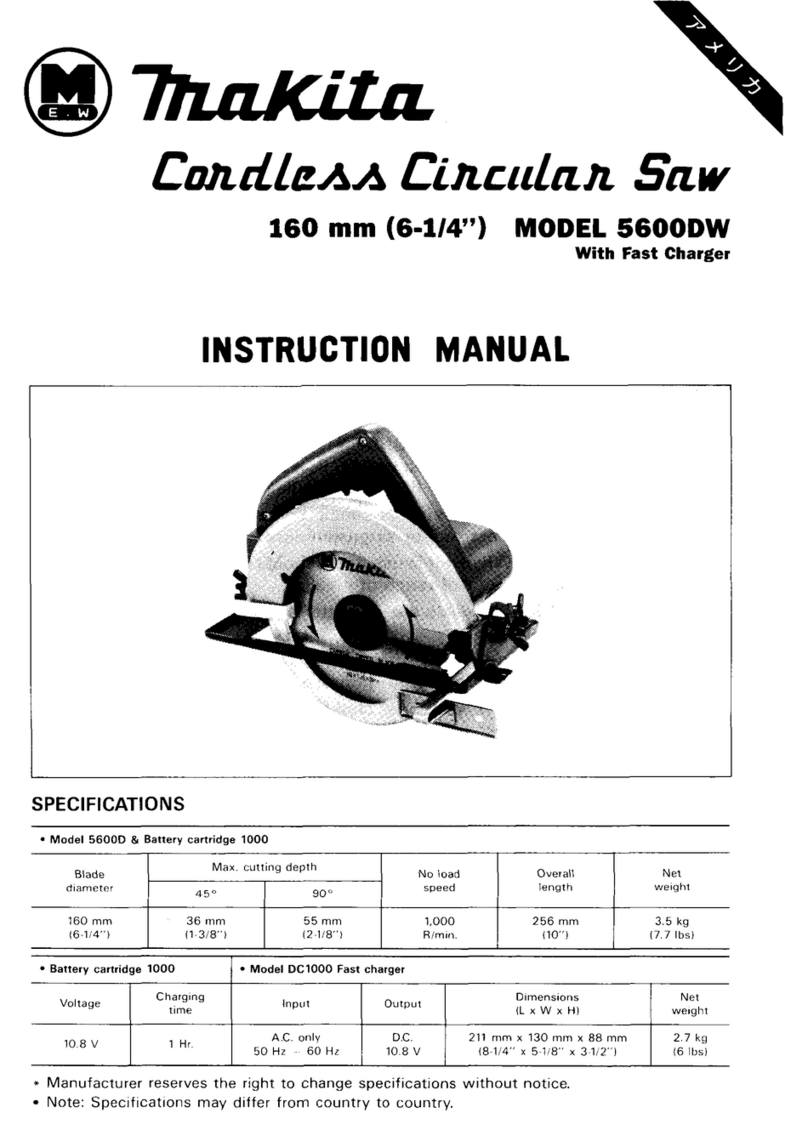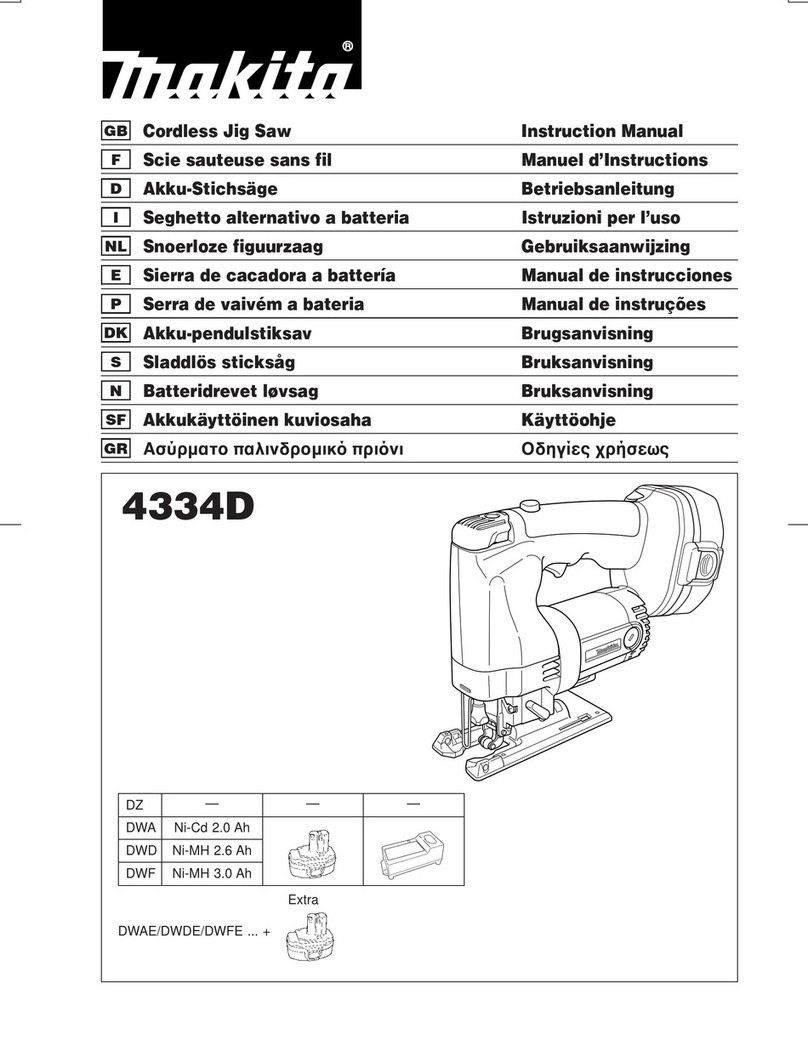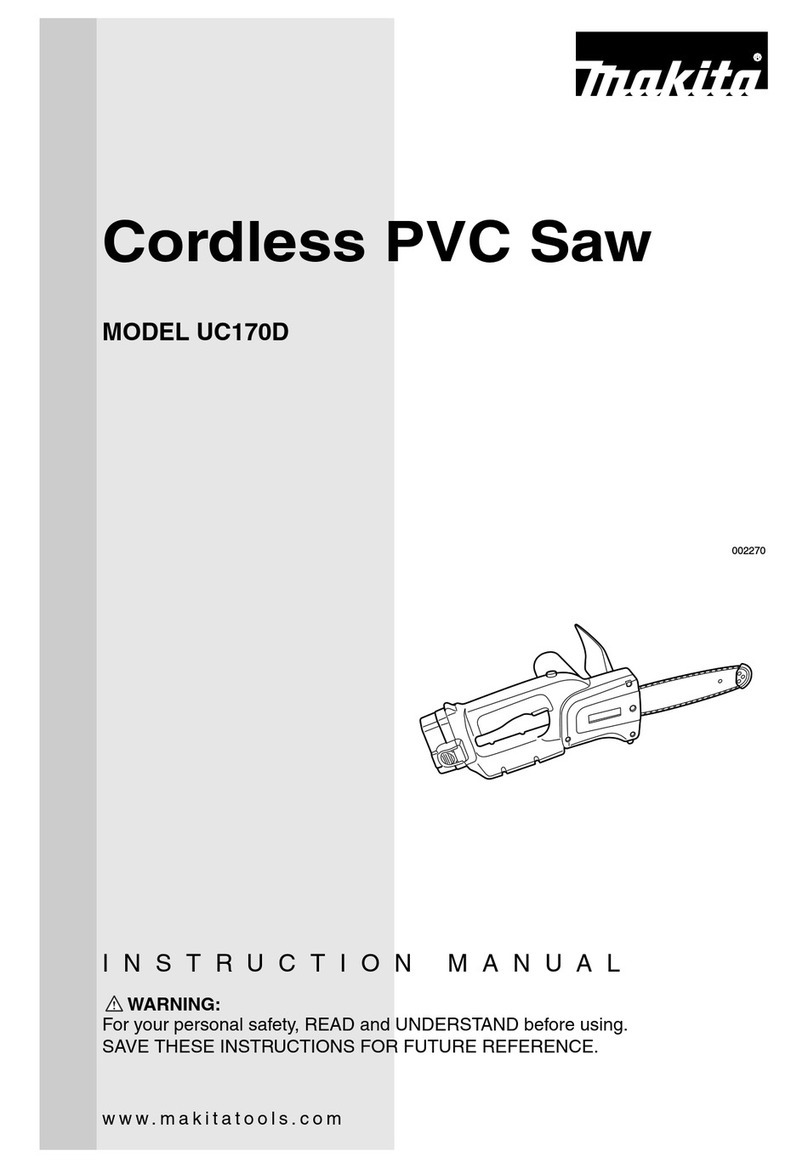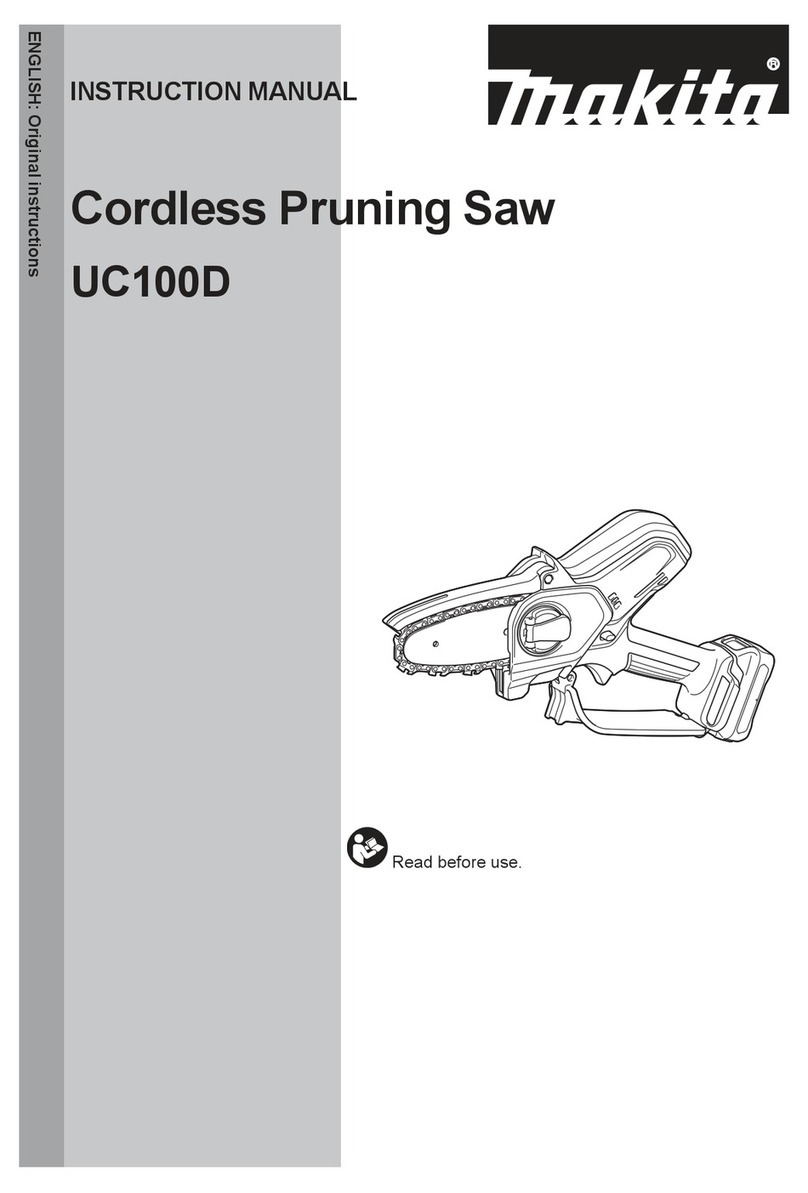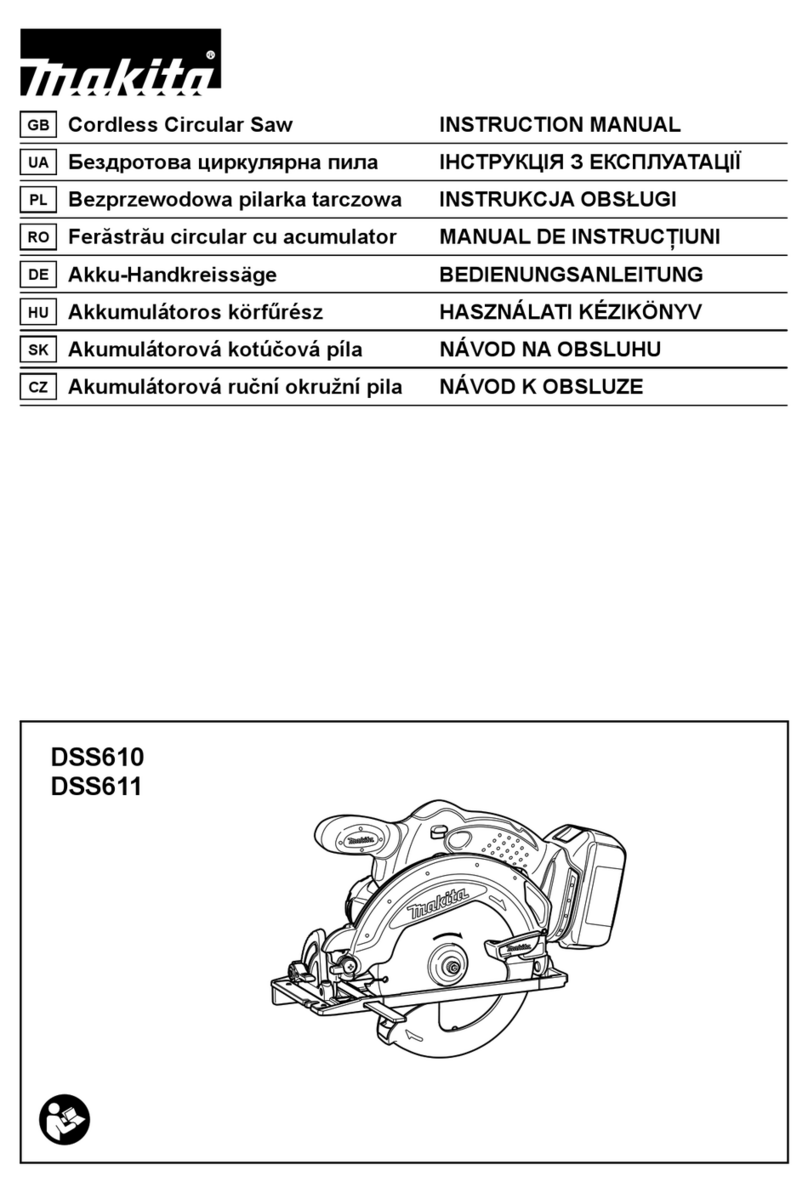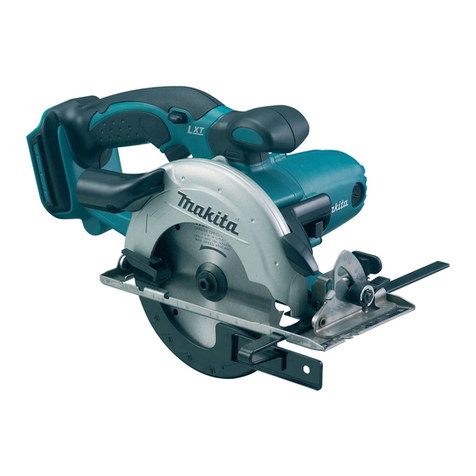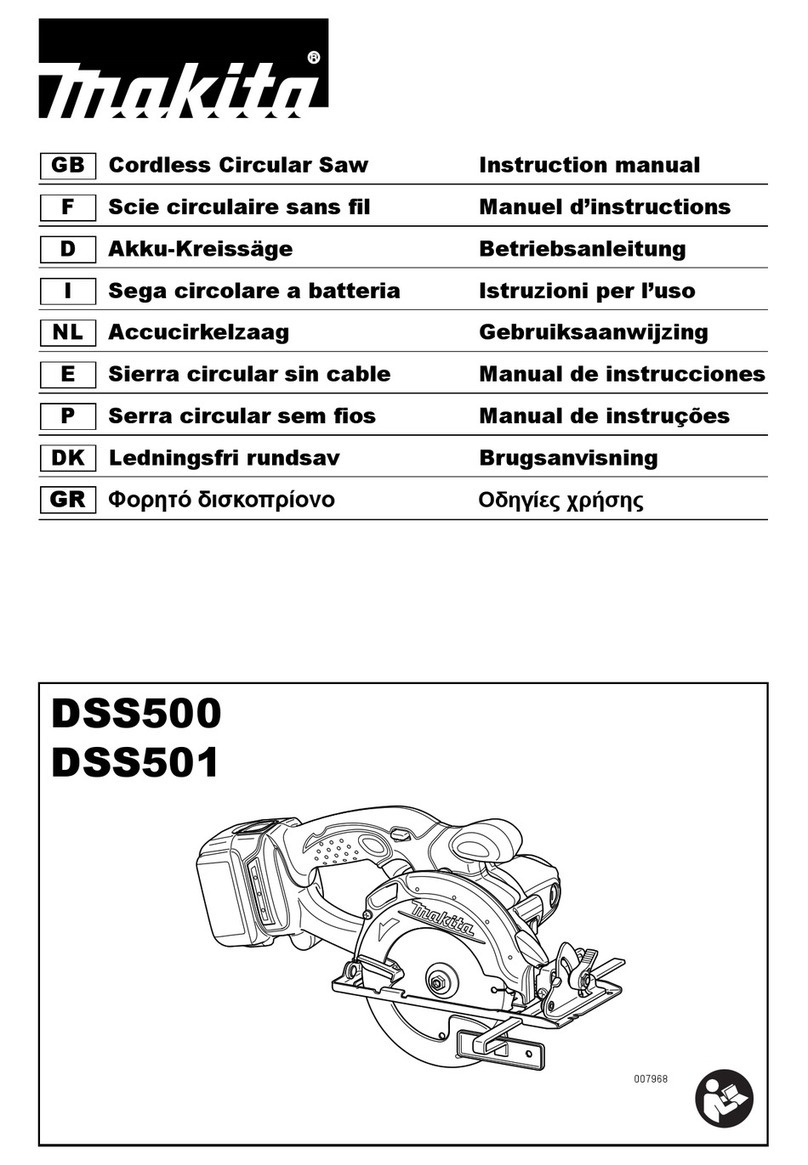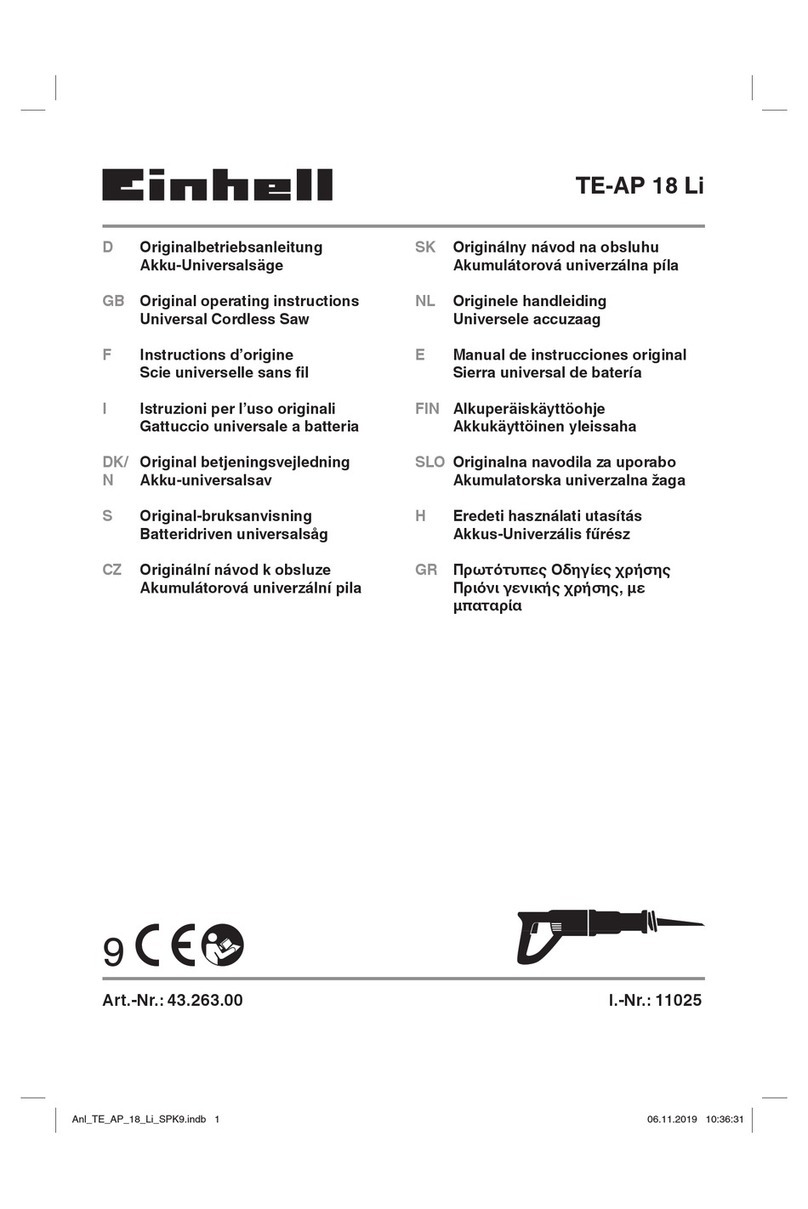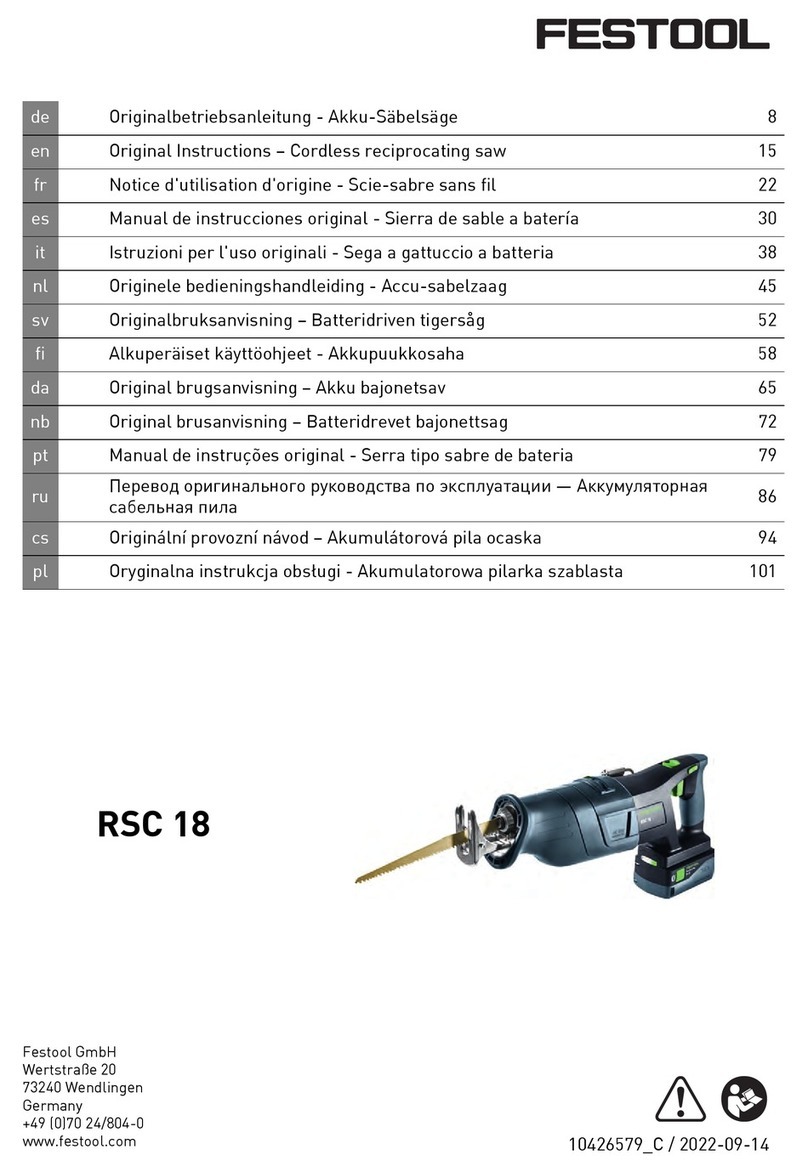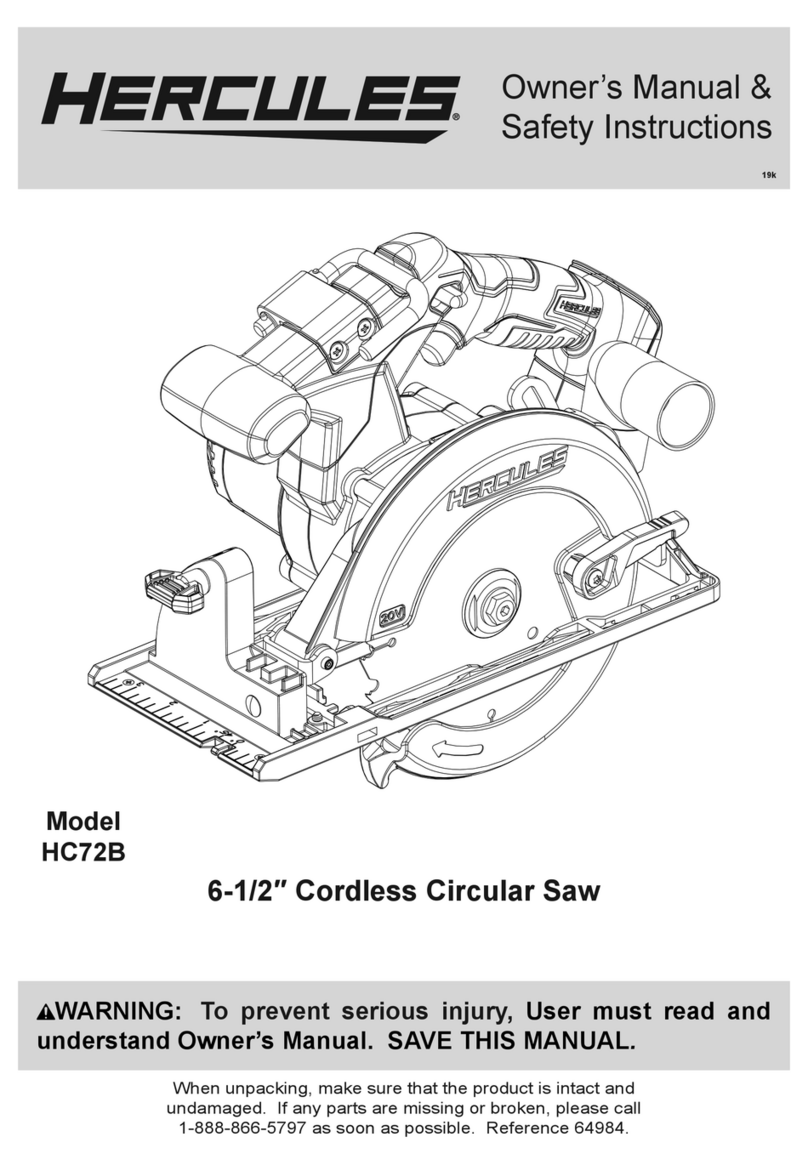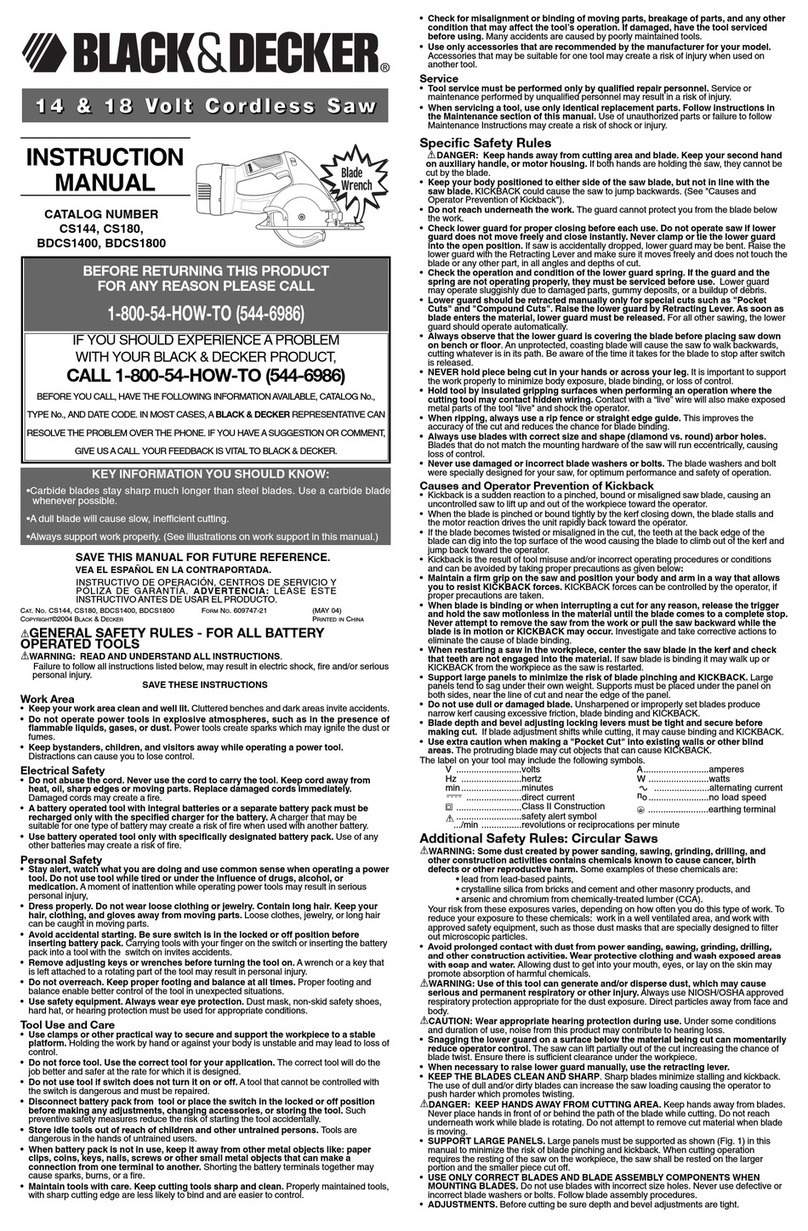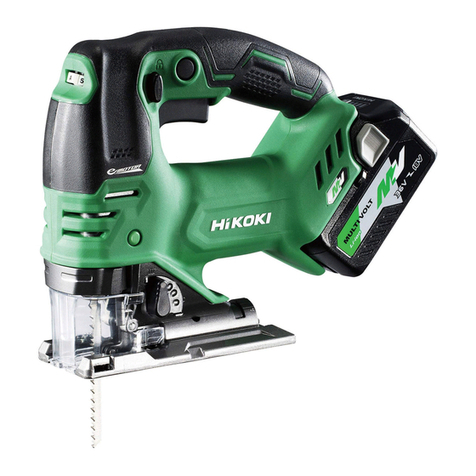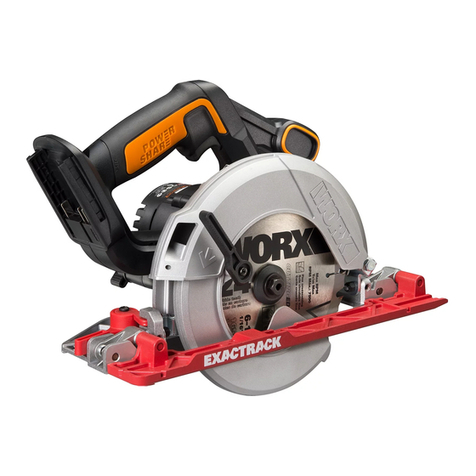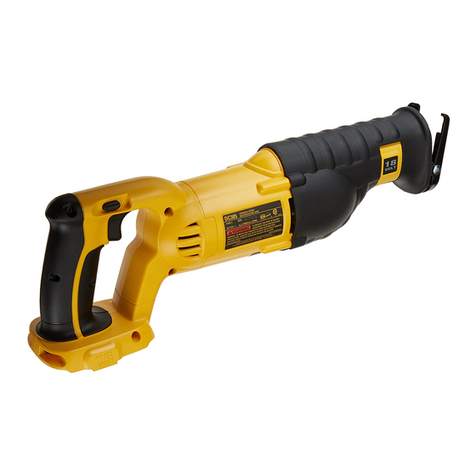
10 ENGLISH
ENGLISH (Original instructions)
SPECIFICATIONS
Model: DHS782 DHS783
Blade diameter 185 - 190 mm
Max. Cutting depth at 0° 60.0 - 62.5 mm
at 45° bevel 43.0 - 44.5 mm
at 48° bevel 41.0 - 42.0 mm
No load speed 6,000 min-1
Overall length 348 mm
Rated voltage D.C. 36 V
Net weight 4.5 - 5.1 kg
• Duetoourcontinuingprogramofresearchanddevelopment,thespecicationshereinaresubjecttochange
without notice.
• Specicationsandbatterycartridgemaydifferfromcountrytocountry.
• Theweightmaydifferdependingontheattachment(s),includingthebatterycartridge.Thelightestandheavi-
est combinations, according to EPTA-Procedure 01/2014, are shown in the table.
Applicable battery cartridge and charger
Batterycartridge BL1815N / BL1820 / BL1820B / BL1830 / BL1830B / BL1840 /
BL1840B / BL1850 / BL1850B / BL1860B
Charger DC18RC / DC18RD / DC18RE / DC18SD / DC18SE / DC18SF
•
Someofthebatterycartridgesandchargerslistedabovemaynotbeavailabledependingonyourregionofresidence.
WARNING: Only use the battery cartridges and chargers listed above.Useofanyotherbatterycartridges
andchargersmaycauseinjuryand/orre.
Intended use
Thetoolisintendedforperforminglengthwaysand
crosswaysstraightcutsandmitercutswithanglesin
woodwhileinrmcontactwiththeworkpiece.With
appropriate Makita genuine saw blades, other materials
can also be sawed.
Noise
ThetypicalA-weightednoiseleveldeterminedaccord-
ing to EN62841-2-5:
Model DHS782
Soundpressurelevel(LpA):93dB(A)
Soundpowerlevel(LWA):104dB(A)
Uncertainty(K):3dB(A)
Model DHS783
Soundpressurelevel(LpA):93dB(A)
Soundpowerlevel(LWA):104dB(A)
Uncertainty(K):3dB(A)
NOTE:Thedeclarednoiseemissionvalue(s)has
been measured in accordance with a standard test
methodandmaybeusedforcomparingonetoolwith
another.
NOTE:Thedeclarednoiseemissionvalue(s)
mayalsobeusedinapreliminaryassessmentof
exposure.
WARNING: Wear ear protection.
WARNING:
The noise emission during actual
use of the power tool can differ from the declared
value(s) depending on the ways in which the tool is
used especially what kind of workpiece is processed.
WARNING:
Be sure to identify safety measures
to protect the operator that are based on an estima-
tion of exposure in the actual conditions of use (tak-
ing account of all parts of the operating cycle such
as the times when the tool is switched off and when
it is running idle in addition to the trigger time).
Vibration
Thevibrationtotalvalue(tri-axialvectorsum)deter-
mined according to EN62841-2-5:
Model DHS782
Workmode:cuttingwood
Vibrationemission(ah,W):2.5m/s2or less
Uncertainty(K):1.5m/s2
Workmode:cuttingmetal
Vibrationemission(ah,M):2.5m/s2or less
Uncertainty(K):1.5m/s2
Model DHS783
Workmode:cuttingwood
Vibrationemission(ah,W):2.5m/s2or less
Uncertainty(K):1.5m/s2
Workmode:cuttingmetal
Vibrationemission(ah,M):2.5m/s2or less
Uncertainty(K):1.5m/s2
